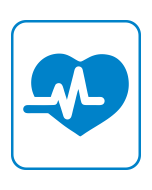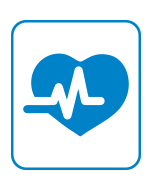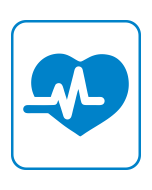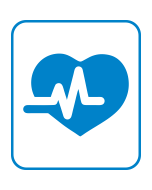Growth Opportunities in Drug Discovery and Early Development Outsourcing Services
M&As, Partnerships, and the Shift Toward an End-to-end CRDMO Model will Boost Sector Expansion
20-Feb-2024
North America
Market Research
$4,950.00
Special Price $4,455.00 save 10 %
The global pharmaceutical research and development (R&D) pipeline accounts for more than 21,000 molecules, as of April 2023, indicating a 5.8% hike over 2022, with more than 6,100 molecules in active development. In general, however, the pharma/biopharma industry has stagnated with respect to R&D activity. Overall R&D expenditure totals about $276.81 billion, with slow 2.5% growth between 2023 to 2024. Decline in the year-on-year growth rate is the result of a shift in focus from COVID-19 therapies to more mainstream therapies across oncology, neurology, respiratory, and many more conditions, which is resulting in overall market normalization with respect to growth rates. Furthermore, the industry witnessed a decline in the average return on investment (ROI) for R&D to as low as 1.2%, and the peak sales per asset valued just above $350 million, indicating a need to build more efficient drug development processes with the implementation of newer technologies.
Of total R&D expenditure, the top 10 pharma companies accounted for just 4% to 5% of the pipeline, while the top 25 contributed to less than 10%. In contrast, small-to-mid segment and emerging biopharma players (companies with 1 or 2 molecules in the pipeline) are the major contributors, accounting for more than 16% of the active pipeline. As a result, the demand for outsourcing activities is on the rise globally, with contract research organizations (CROs) and contract development and manufacturing organizations (CDMOs) contributing to the strong industry growth.
Moreover, advancements in multiple emerging biotechnology platforms (e.g., RNA technology, protein degradation [PROTAC], and antibody engineering technologies) coupled with the application of digital health technologies in the form of artificial intelligence (AI) and machine learning are supporting unprecedented innovation, ascertaining increased success of a molecule. This activity is improving the partnership landscape across the global drug discovery and preclinical development industry.
Overall, the sector is witnessing an emergence of specialized lab testing and bioanalytical CROs. With techniques such as next-generation sequencing (NGS), high throughput screening (HTS), and many more crucial to drug development, a steady rise in CRO and central lab partnerships is underway. To add to this, several specialized bioinformatics CROs are emerging and creating greater partnership opportunities. Last, the larger CROs have developed separate lab testing divisions that allow them to focus on specific drug discovery and preclinical development testing services.
Moving forward, CROs/CDMOs will likely focus on targeted scale up of preclinical capabilities through cross-industry partnerships and academic partnerships, ascertaining knowledge transfer to pharma companies through out-licensing opportunities, thereby supporting greater innovation while transitioning from a vendor-ship to partnership model.
Author: Aarti Siddhesh Chitale
Revenue forecast
The revenue estimate for the base year 2023 is $26.60 billion, with a CAGR of 9.9% for the study period 2021–2028

The Impact of the Top 3 Strategic Imperatives on the Drug Discovery and Early Development Outsourcing Services
Disruptive Technologies
Why:
- Technological developments to support personalized medicines, such as the transition from induced pluripotent stem cells (iPSC) to organoid cultures and engineered tissue systems; proteolysis-targeting chimeras (PROTACs); robust molecular and genome editing technologies; and easy access to whole genome sequencing are essential pillars of drug discovery and early development programs.
- Artificial intelligence (AI) and machine learning (ML) raise the prospects of innovative and cost- and time-effective therapies development.
Frost Perspective:
- AI/ML tools and novel drug development platforms have proven useful in designing novel therapies for undruggable targets. The FDA modernization Act 2.0 suggests the use of technology for preclinical models will further propel AI/ML.
- In the 5–7 years, molecular technological innovations, such as ribonucleic acid (RNA) drug discovery tools, high throughput screening (HTS), and many more, will help identify these “undruggable” targets.
Industry Convergence
Why:
- A growing shift toward establishing one-stop-shop service providers is fueling merger and acquisition (M&A) activities, resulting in a growing number of contract research, development, and manufacturing organizations (CROs).
- The emergence of small-to-mid and virtual biotech companies is leading to a great need for outsourcing services with requirements linked to toxicity assessment, cell line engineering, and antibody testing (among many others), which are the pillars of effective drug discovery and preclinical development.
Frost Perspective:
- In the next 3–5 years, contract research organizations (CROs) will continue to expand their internship laboratory settings with acquisitions and partnerships with specialized central laboratories.
- Players such as RASA life sciences and their bioinformatics CRO are unique, specialized service providers impacting pharmaceutical (pharma) partnerships.
Innovative Business Models
Why:
- Increasing complexities in drug development drives academic institutes and biotechnology (biotech) start-ups involved in the early discovery stages to partner with pharma companies that have the development and disease expertise to transition from bench to clinic quickly.
- Successful collaborations between academic institutes, pharma/biotech companies, CROs, and regulators to expedite drug development spark the need for a shift in partnering business models for drug discovery and innovation.
Frost Perspective:
- In the next 2–3 years, tech-enabled drug discovery (TEDD) players such as Recursion, Valo Health, and Atomwise will support drug repurposing and predictive models to find new drug molecules with a higher success rate passing through the drug development life cycle.
- Biotech companies will continue to engage in licensing deals with big pharma companies to support new approaches, such as RNA-targeting through small molecules.
Scope of Analysis
- This analysis provides an overview of the global drug discovery and early development outsourcing industry with a 5-year global revenue forecast from 2022 to 2028.
- The geographic scope of this global study focuses on three key regions, namely North America (NA), Europe and Asia-Pacific (APAC). The analysis includes revenue forecasts by region at an overall level, with additional qualitative insights on regional trends and players.
- The study also looks at M&A activity and other investment trends influencing the drug discovery and early development outsourcing industry.
- Drug discovery and early development outsourcing includes services such as target identification; hit to lead generation; lead optimization; in vitro and in vivo preclinical evaluation; absorption, distribution, metabolism, and excretion (ADME); toxicology; pharmacokinetics (PK); bioanalytical; and other analytical testing services.
- The study provides qualitative insights on the outsourcing landscape by service provider type, meaning CROs and CDMOs, in terms of the key activities each vendor supports. Furthermore, analysis includes comprehensive competitive benchmarking of the key stakeholders for specific service portfolios pertaining to drug discovery and pre-clinical development services.
- Last, the study offers qualitative insights on the therapy areas driving the outsourcing of drug discovery and early development activities.
Growth Drivers
Driver: Growing Focus on Advanced Biologic Therapies: The pharma market currently holds more than 30 innovative cell and gene therapies, 5 of which were approved in 2022 alongside the approval of RNA-based therapies for COVID-19. This indicates the prowess of large molecule pipelines and a simultaneous need for technical know-how and infrastructure to support the consistent development of these therapies, thereby leading to increased outsourcing of drug discovery services.
Driver: Increased Technology Adoption: Investment in AI-driven technologies among biopharma companies has risen manifold, which will propel outsourcing or partnering of pharma, CDMOs, and CRO companies with TEDD vendors and AI-enabled clinical development players that can provide access to skilled resources such as data scientists and information technology (IT) professionals as well as the necessary wet and dry lab capabilities to support the early-stage programs.
Driver: High Cost of Drug Discovery and Pre-clinical Development: Drug discovery and pre-clinical testing alone account for more than 30% of all drug development costs. As a result, pharma companies are increasingly looking at cutting down on costs by outsourcing to drug discovery CROs that have the infrastructure and lab infrastructure needed to support these activities at a lower cost.
Driver: R&D Investment in Acquiring Advanced Equipment for Drug Testing: The pre-clinical pipeline grew to more than 11,000 molecules in 2023, creating a strong boost to the key techniques used for drug testing, such as mass spectrometry. With growing focus on proteins, peptides, and nucleic acid-based therapies, techniques such as MALDI-TOF MS and ligand binding assays have gained traction, driving large-scale investments from CROs, CDMOs, and research labs, in turn driving analytical testing outsourcing.
Growth Restraints
Changing Regulatory Frameworks for Pre-clinical Development:
The FDA recently announced the FDA Modernization Act 2.0, which prohibits the use of animals for pre-clinical testing and instead promotes the application of simulation models. This can indirectly impact pre-clinical outsourcing, especially to CROs that are directly involved in in vivo animal testing.
Challenges with Method Validation During Stability Testing:
Stability testing and associated method validation during drug testing is of utmost importance to avoid unnecessary cost and timeline implications, whilst assessing potential success or failure. Especially with the rising number of biopharmaceuticals, such as monoclonal antibodies (mAbs) and antibody drug conjugates (ADCs), molecules contamination leading to batch-to-batch inconsistencies and improper coordination among analytical development teams could lower the success rates of the drug development process due to poor stability.
IP Transfer Challenges:
To date, many pharma and biopharma companies prefer conducting drug discovery phases in-house because of issues related to intellectual property rights and technology transfer to outsourced partners that involve potential data breaches. This can directly impact the outsourcing penetration rate for drug discovery services as well as industry growth.
Competitive Environment
| Number of Competitors | >500 competitors |
| Competitive Factors | Cost, performance, technology, reliability, contractor relationships, customer relationships |
| Key End-user Industry Verticals | Pharmaceutical manufacturing, pharmaceuticals, CROs, CDMOs |
| Leading Competitors | Charles River Laboratories, WuXi AppTec, Syngene International, Shanghai Medicilon, Signatur Discovery, Inotiv |
| Other Notable Competitors | Viva Biotech, Crown Biosciences, Aurigene Discovery Services, ERBC Group, SpiroChem, Amplify Bio |
| Notable Acquisitions and Mergers | CRL’s acquisition of SAMDI, Veeda Clinical’s acquisition of BioNeeds preclinical, Genesis’ acquisition of JSS Medical |
Why is it Increasingly Difficult to Grow?
The Strategic Imperative 8™
The Impact of the Top 3 Strategic Imperatives on the Drug Discovery and Early Development Outsourcing Industry
Growth Opportunities Fuel the Growth Pipeline Engine™
Scope of Analysis
Phases of Drug Discovery and Early Development
Market Segmentation
Key Competitors by Region
Key Competitors by Type of Service
Drug Discovery and Early Development Services
Key Industry Trend Analysis
Digitization of the Drug Development Value Chain
Computer-aided Drug Discovery and Preclinical Research
Growth Metrics
Growth Drivers
Growth Restraints
Drug Discovery and Preclinical Development—Evolving Vendor Ecosystem
CRDMOs—The New Go-to Partners for Pharma Innovation
Academia—Bridging the Research Gap in Pharma Innovation
Evolution of Academic Research
CROs Paving Way for Efficient Technology Transfer
Investment Trends
Early-stage CRO/CDMO Service Collaboration—Nonclinical
Expanding Non-clinical Expertise through Industry Acquisitions
Scale Up through Funding and In-house Investments
Pharma R&D Expenditure
Pharmaceutical R&D Landscape
R&D Mapping by Therapy Area and Stakeholder Type
R&D Pipeline Assessment by Therapy Area and Stakeholder Type
Nuances of Drug Discovery and Preclinical Development
Revenue Forecast Assumptions and Methodology
Revenue Forecast
Revenue Forecast by Phase of Development
Revenue Forecast Analysis
Revenue Forecast by Region
Percent Revenue Share by Region
Revenue Forecast Analysis by Region
Competitive Environment
Revenue Share by Type of Service Vendor
Revenue Share Analysis—CRO
Revenue Share Analysis—CDMO
Competitor Landscape by Type of Non-clinical Service
Competitor Landscape—CRDMOs
Competitor Landscape—CROs
Competitor Landscape—CDMOs
Competitor Assessment
Growth Opportunity 1: Next Generation Sequencing NGS and Bioinformatics Capabilities
Growth Opportunity 2: Regulatory Consulting and IND-enabling Studies
Growth Opportunity 3: De Novo Drug Design and Disease Modeling with Generative AI
Your Next Steps
Why Frost, Why Now?
List of Exhibits
Legal Disclaimer
- Drug Discovery and Early Development Outsourcing: Key Services, Global, 2022–2028
- Drug Discovery and Early Development Outsourcing: Growth Metrics, Global, 2023
- Drug Discovery and Early Development Outsourcing: Growth Drivers, Global, 2024–2028
- Drug Discovery and Early Development Outsourcing: Growth Restraints, Global, 2024–2028
- Drug Discovery and Early Development Outsourcing: Pharmaceutical R&D Expenditure, Global, 2021–2028
- Drug Discovery and Early Development Market: Pipeline by Phase of Development, Therapy Area and Key Players
- Drug Discovery and Early Development Outsourcing: Revenue Forecast, Global 2021–2028
- Drug Discovery and Early Development Outsourcing: Revenue Forecast by Phase of Development, Global 2021–2028
- Drug Discovery and Early Development Outsourcing: Revenue Forecast by Region, 2021–2028
- Drug Discovery and Early Development Outsourcing: Revenue Share by Region, 2021–2028
- Drug Discovery and Early Development Outsourcing: Revenue Share by Type of Service Vendor, Global 2023 and 2028
Speak directly with our analytics experts for tailored recommendations.
Purchase includes:
- Report download
- Growth Dialog™ with our experts
Growth Dialog™
A tailored session with you where we identify the:- Strategic Imperatives
- Growth Opportunities
- Best Practices
- Companies to Action
Impacting your company's future growth potential.
| Deliverable Type | Market Research |
|---|---|
| Author | Aarti Siddhesh Chitale |
| Industries | Healthcare |
| No Index | No |
| Is Prebook | No |
| Keyword 1 | Early Development Outsourcing Solutions |
| Keyword 2 | Technology Innovations in Drug Discovery |
| Keyword 3 | Drug Discovery Outsourcing Industry Insights |
| List of Charts and Figures | Drug Discovery and Early Development Outsourcing: Key Services, Global, 2022–2028~ Drug Discovery and Early Development Outsourcing: Growth Metrics, Global, 2023~ Drug Discovery and Early Development Outsourcing: Growth Drivers, Global, 2024–2028~ Drug Discovery and Early Development Outsourcing: Growth Restraints, Global, 2024–2028~ Drug Discovery and Early Development Outsourcing: Pharmaceutical R&D Expenditure, Global, 2021–2028~ Drug Discovery and Early Development Market: Pipeline by Phase of Development, Therapy Area and Key Players~ Drug Discovery and Early Development Outsourcing: Revenue Forecast, Global 2021–2028~ Drug Discovery and Early Development Outsourcing: Revenue Forecast by Phase of Development, Global 2021–2028~ Drug Discovery and Early Development Outsourcing: Revenue Forecast by Region, 2021–2028~ Drug Discovery and Early Development Outsourcing: Revenue Share by Region, 2021–2028~ Drug Discovery and Early Development Outsourcing: Revenue Share by Type of Service Vendor, Global 2023 and 2028~ |
| Podcast | No |
| WIP Number | PFA5-01-00-00-00 |




